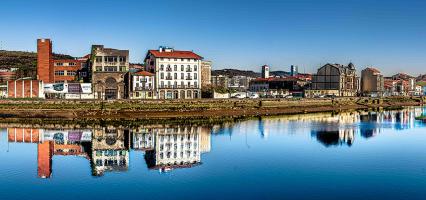Thessaloniki gets ready for its metro launch in November
The underground rapid transit lines have been under construction for almost two decades due to various project delays
 TheMayor.EU logo
TheMayor.EU logo The annual forest status report for 2021 shows the recovery has begun, though trees are never in a hurry
At the start of this week, the States of Berlin and Brandenburg published their annual report on the condition of their forests. According to the document, despite more favourable weather conditions this year, the overall state of trees is worse than average.
This was mainly due to a three-year long drought in the area, that caused death rates and visible damages to go up. While 2021 has been better in terms of water distribution, the damage that the forests suffered will take a lot longer to heal.
Local authorities are taking decisive steps to help forests and build resilience, with ramped-up re-forestation efforts.
Despite better weather conditions than in previous years, the health condition of the forests in Berlin and Brandenburg remains critical in 2021. Around 34% of the trees, mainly pines and oaks continue to show significant damage. In 2020, that portion was 36%.
A further 60% of the trees show ‘slight’ damage, up from 57% the previous year, suggesting some trees are healing. However, the portion of healthy trees has gone down to 6%, compared to last year's 7%. This is the lowest amount of healthy trees since forest condition surveys began in 1991.
Despite gradual improvements, last year saw a peak in tree death rates at 1.4%. In 2021, the water balance was healthier and that has contributed to a drop in death rates to a value of 0.6%. This, however, is still lower than the average of 0.38%. Mortality rates of pines are decreasing, while in oaks they are stagnating.
The biggest contributor behind tree damage in the area is a persistent drought that started in 2018 and ended in 2020. Local authorities are doing a couple of things to counteract the unstable and changing weather conditions, though forests are slow to regenerate and adapt to climate 'mood swings'.
One thing is the prevalence of pine trees across the two states as the most common species. Pines are naturally more resistant to drought. The other thing is increasing the number of oaks, which would help to create more natural mixed forests. Although oaks are not as resilient to climate shifts, a mixed forest, as a whole unit, is.
In autumn 2020, local authorities planted around 425,000 trees in Berlin alone, as part of the mixed forest programme. This year, they will plant a total of 450,000 - mainly oak, beech, hornbeam, linden and maple.

The underground rapid transit lines have been under construction for almost two decades due to various project delays

Now you can get your wine in Talence by paying directly in Bitcoin

That’s because the state has to spend money on updating the railway infrastructure rather than subsidizing the cost of the popular pass

Rethinking renewable energy sources for the urban landscape

The examples, compiled by Beyond Fossil Fuels, can inform and inspire communities and entrepreneurs that still feel trepidation at the prospect of energy transition

Now you can get your wine in Talence by paying directly in Bitcoin

The 10th European Conference on Sustainable Cities and Towns (ESCT) sets the stage for stronger cooperation between the EU, national and local level to fast track Europe's transition to climate neutrality.

At least, that’s the promise made by the mayor of Paris, Anne Hidalgo

The underground rapid transit lines have been under construction for almost two decades due to various project delays

At least, that’s the promise made by the mayor of Paris, Anne Hidalgo

Hostal de Pinós is located in the geographical centre of the autonomous region

Despite its church-y name, the district has long been known as the hangout spot for the artsy crowds

Urban dwellers across the EU are having a say in making their surroundings friendlier to people and the environment.

Forests in the EU can help green the European construction industry and bolster a continent-wide push for architectural improvements.

Apply by 10 November and do your part for the transformation of European public spaces

An interview with the Mayor of a Polish city that seeks to reinvent itself

An interview with the newly elected ICLEI President and Mayor of Malmö

A conversation with the Mayor of Lisbon about the spirit and dimensions of innovation present in the Portuguese capital














